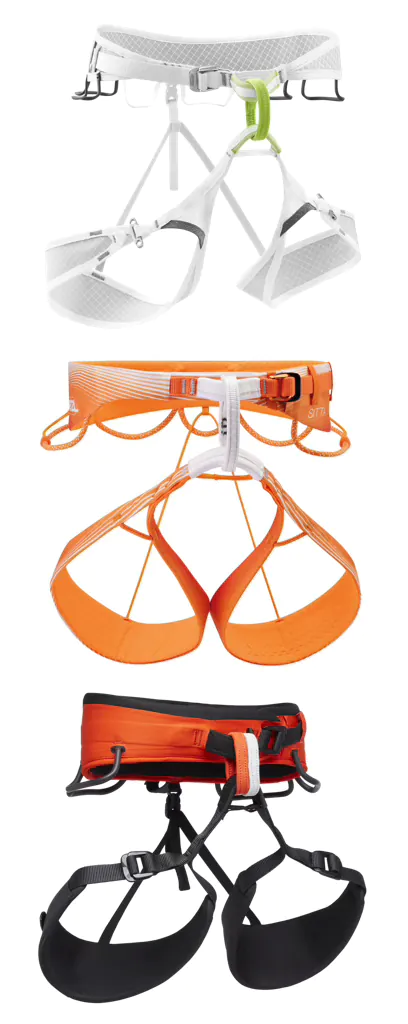Climbing Harness
What's it for?
Whether you’re sending your first route at the climbing gym, projecting an overhung sport climb outdoors or simply crossing a glacier - a solid harness is one of the most essential pieces of gear in your arsenal. The right harness provides comfort, safety, and efficiency, while the wrong one can turn an enjoyable climb into a painful, inconvenient experience.
A climbing harness is a piece of personal protective equipment (PPE) designed to secure a climber to a rope or anchor system. It distributes forces generated during a fall, belay, or rappel, keeping you safe and comfortable. Harnesses are essential for all climbing disciplines, including sport climbing, trad climbing, alpine climbing, and mountaineering.

Harness anatomy
Understanding the key components of a climbing harness helps you use it effectively and choose one that suits your needs:
- Waist Belt: The section that wraps around your waist and supports your body weight in a fall.
- Leg Loops: Adjustable or fixed loops that go around your thighs to distribute weight evenly.
- Belay Loop: The strongest part of the harness, where the belay device is attached using a carabiner.
- Tie-in Points: The loops where the rope is tied directly into the harness, reinforcing the load distribution.
- Gear Loops: Rigid or flexible loops used for carrying quickdraws, cams, and other climbing gear.
- Adjustable Buckles: Used to tighten or loosen the waist and leg loops for a secure fit.

Choosing a harness
There is no one-size-fits-all when it comes to harnesses. The best choice depends on the climbing style and preferences:
Climbing Discipline
- Alpine & Ice Climbing - minimalist harness with adjustable and openable leg loops (easier to put on when wearing crampons or skis) and ice screw clipper slots.
- Sport Climbing - lightweight harnesses with minimal padding and ample gear loops.
- Trad Climbing - extra padding and more gear loops to accommodate cams and nuts.
- Gym Climbing - simple, affordable harnesses designed for comfort.
Fit and Comfort
- The waist belt should sit above your hips securely.
- Leg loops should fit snugly but allow movement.
- Padding and breathability matter for long climbs.
- Lightweight models are great for high-performance climbing.
- Heavier, padded models are better for comfort during long belays.
